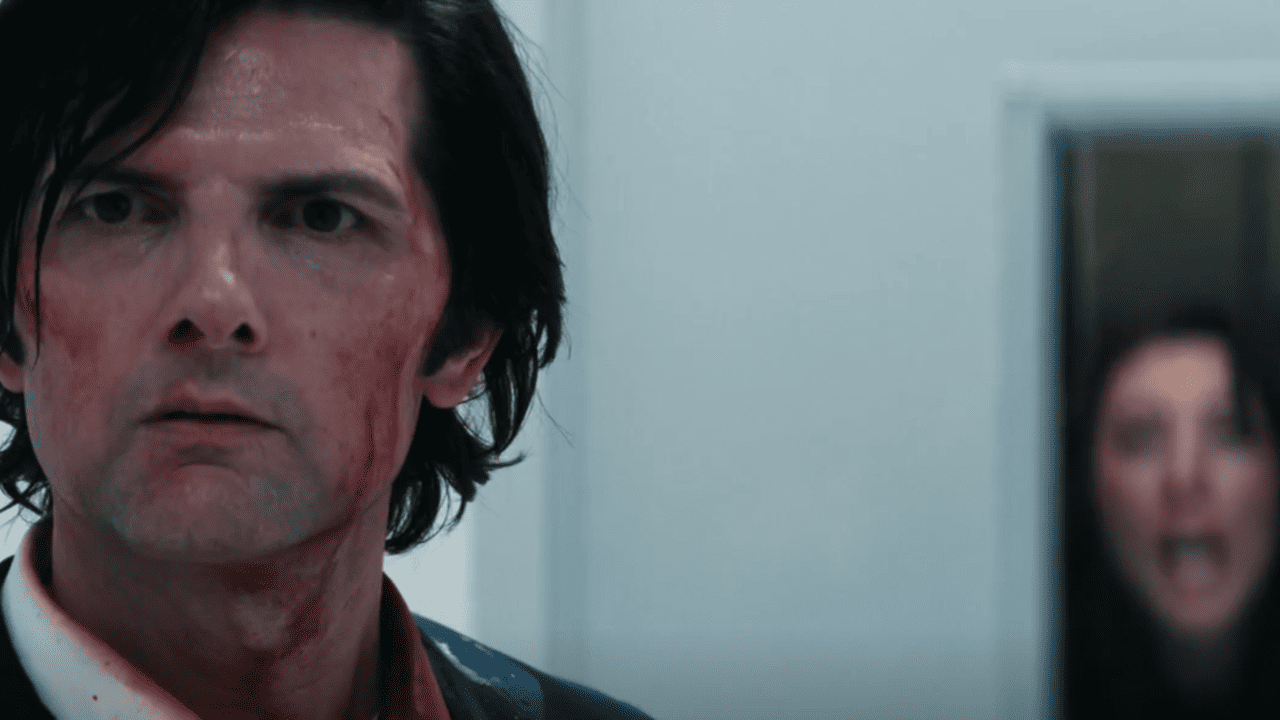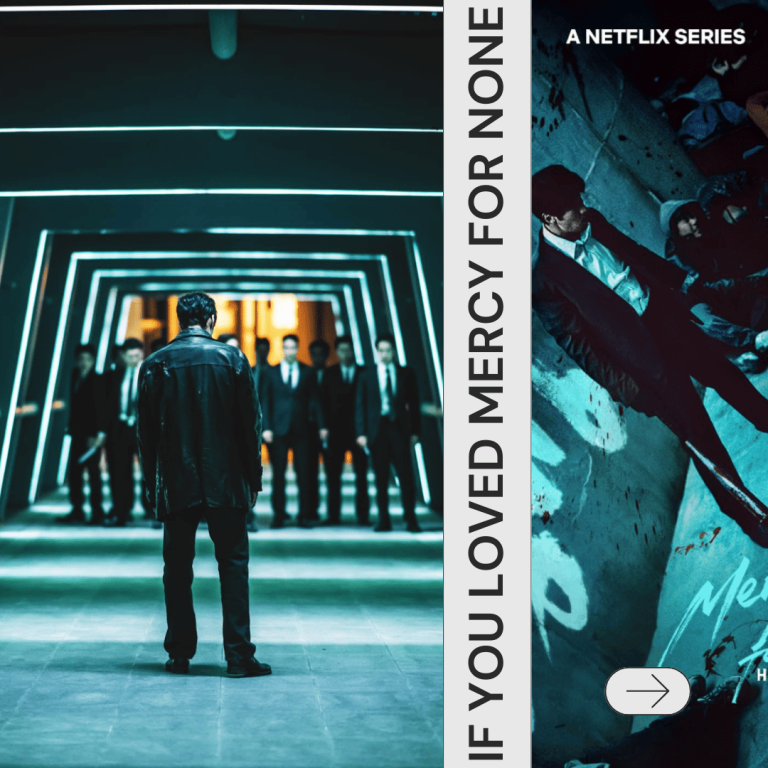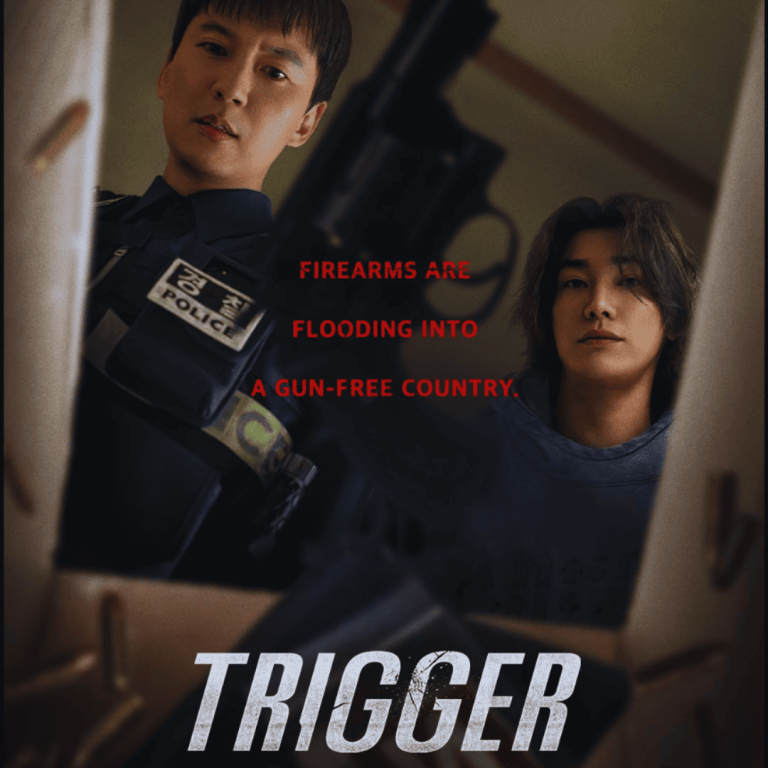Severance Season 2 Identity Explained: What Remains When the Self Breaks
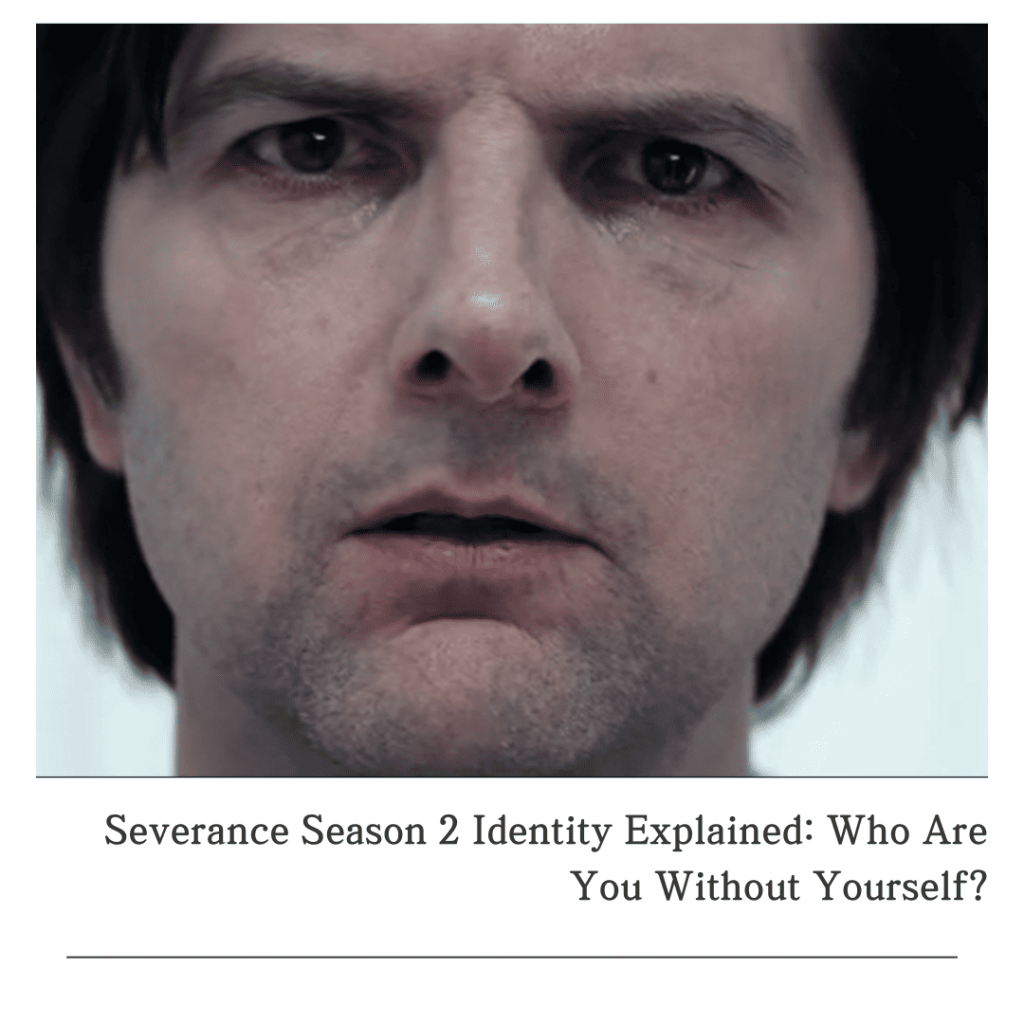
Severance Season 2: A Deep Dive Into Identity
When who you are depends on where you are.
Severance has always played in the space between consciousness and control. But Season 2 takes the core question of identity and drags it into the fluorescent-lit, paranoia-drenched halls of Lumon – and then beyond.
While the mystery deepens and tensions ratchet up, one theme rises to the top: identity isn’t a given. It’s a battleground. Let’s dive into my Severance Season 2 Identity Explained post.
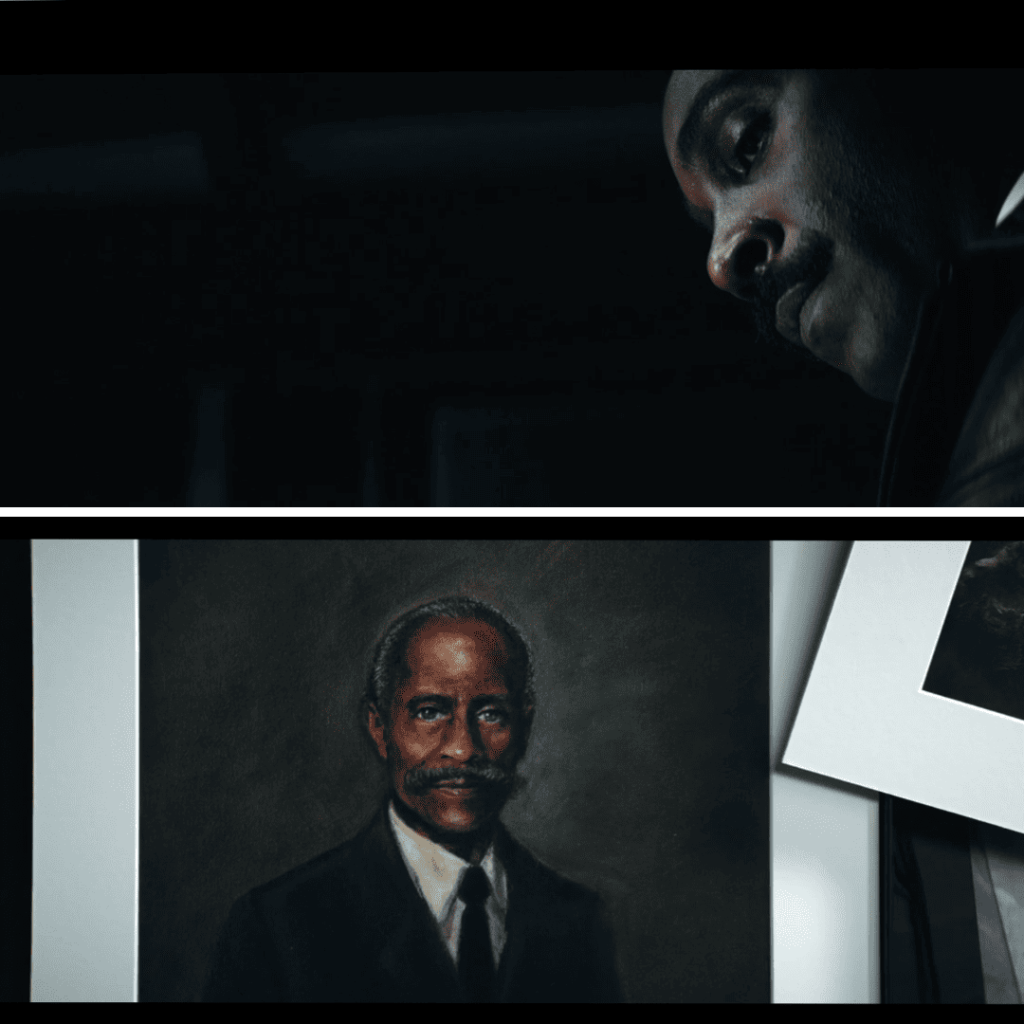
Milchick: Tokenism in a Corporate Cult
Milchick’s arc this season subtly but powerfully confronts identity politics in the workplace. When he receives a “portrait of Kier” rendered in black paint, it’s not a tribute. It’s a reduction.
As if simply changing the skin tone of Lumon’s idol can somehow make Milchick feel seen. It’s corporate diversity theater at its most insidious. The fact that Natalie insists the board wanted him to know she received a similar portrait only adds insult to injury.
Mr. Drummond’s condescending language policing, urging Milchick to use simpler words is another attempt to strip him of voice and power. But Milchick claps back with the unforgettable retort: “Devour feculence.” A quiet, vicious resistance. For a character I haven’t always rooted for, this moment hit hard.

Helly and Mark: Autonomy in Shared Skin
Season 2 explores the messy emotional entanglements between innies and outies, especially in Helly’s storyline. Outie Helly spies on her innie self’s interactions with Mark and becomes obsessed with their chemistry. She wants to experience that connection firsthand so she engineers a romantic encounter with him in the outside world.
This raises major ethical and existential questions. To innie Mark, this isn’t cheating. Why? Because he views himself as entirely separate from his outie. The body may be shared, but the self is not.
Even more complex: outie Mark is actively trying to reintegrate his consciousness with innie Mark’s. But he does so without permission. Again, who gets to decide what constitutes a complete self?
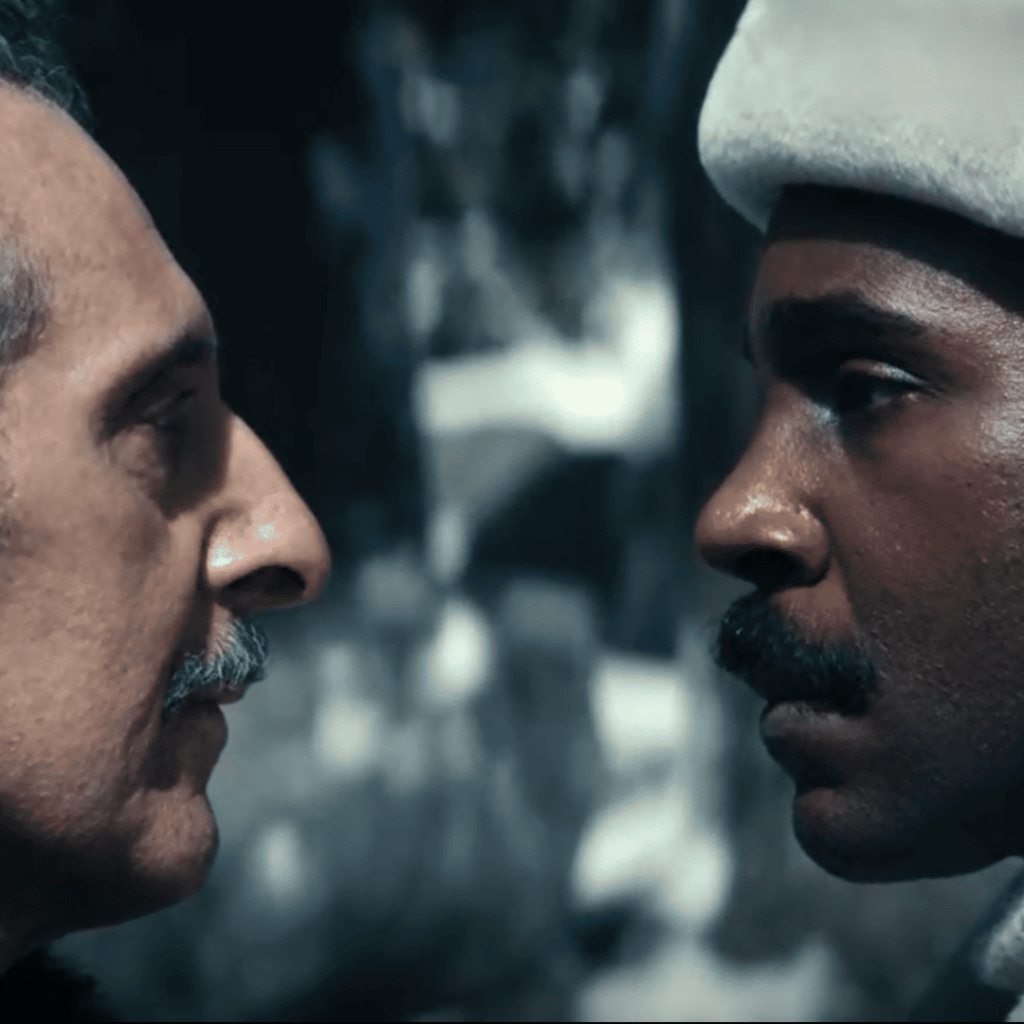
Irving & Helly: Protectors of the Self
Irving, ever watchful, nearly attacks outie Helly when she invades the severed floor – a space that no outie should occupy. It’s telling that he, of all people, recognizes how sacred that divide is. Meanwhile, innie Helly chooses intimacy with innie Mark to assert her own independence: she’s not just a pawn of Helly Eagan. She’s someone else entirely.
And then there’s Helly’s father, who visits her on the severed floor claiming to see “the spirit of Kier” in her innie self. That’s… disturbing. He no longer sees his daughter in her outie form – only in the version molded by Lumon. A daughter divided, weaponized.
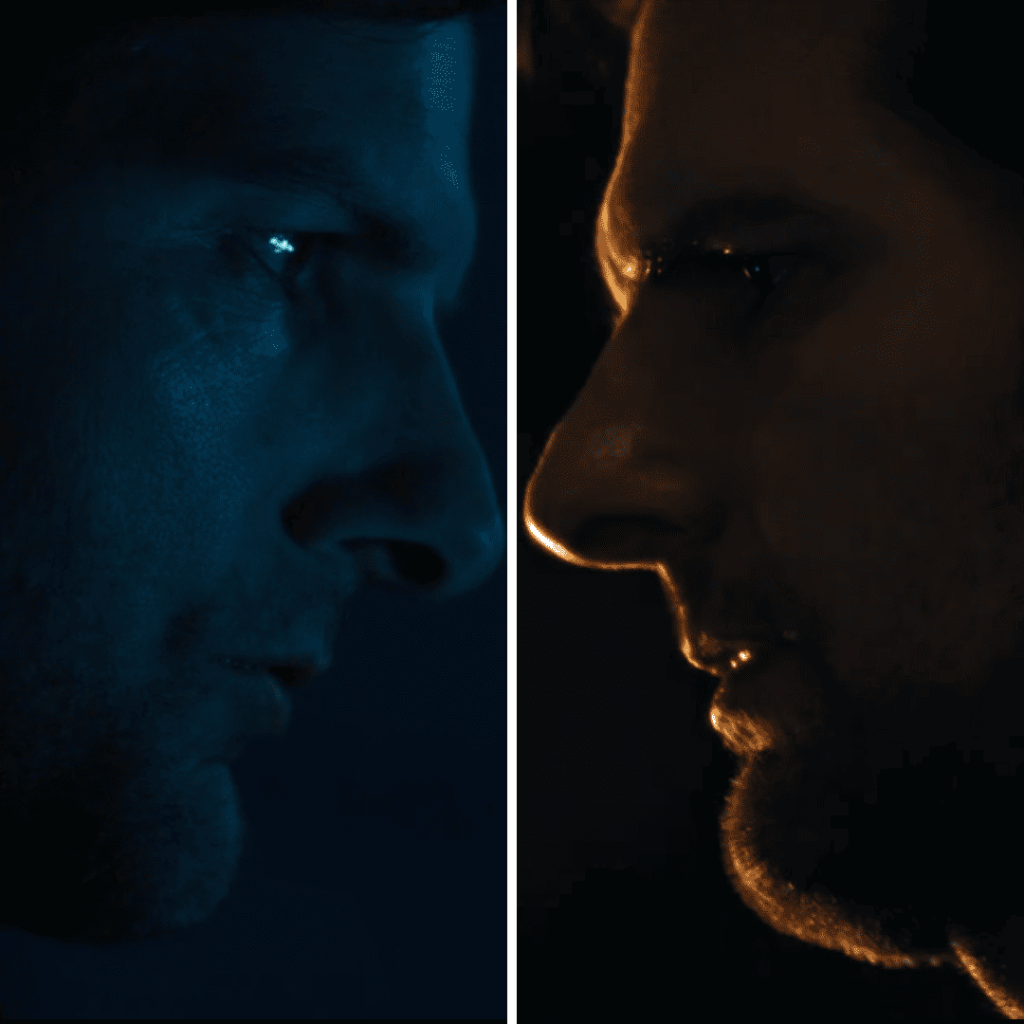
Mark vs. Mark: A Consciousness Confrontation
In the Cold Harbor episode, we see innie Mark and outie Mark confront one another. Outie Mark sees himself as the “main character,” while his innie is a kind of emotional side quest – a child born without history or autonomy.
But innie Mark has lived. He’s loved. He’s questioned. He’s even read his brother-in-law’s banned book. Lumon may be his whole world, but he’s carved out something real within it. And in the end? He chooses it. He chooses to exist, even in a world built to exploit him.
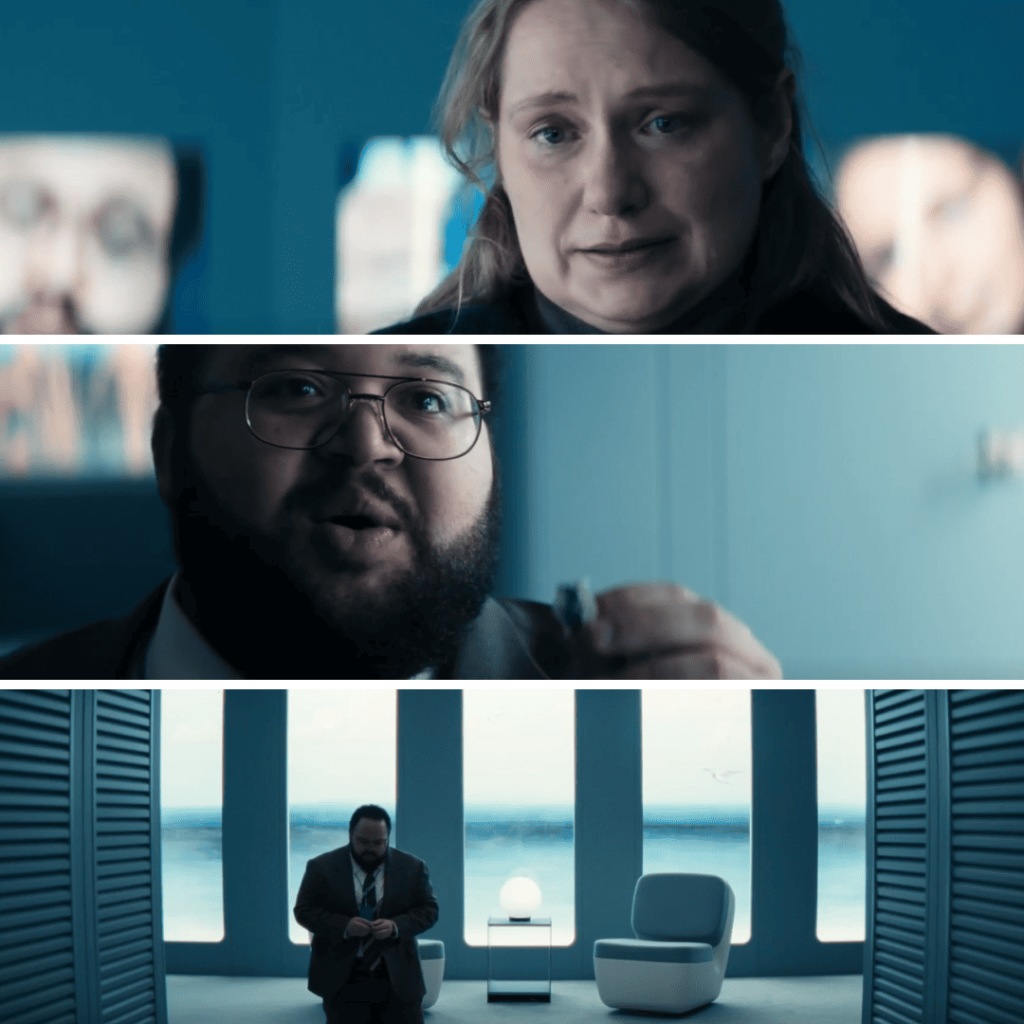
Dylan: When the Innie Becomes Real
Dylan’s arc is a quiet standout. Outie Dylan has a family he can barely provide for. Innie Dylan meets his wife and kids and falls in love with the life he never got to live. When his wife decides not to visit again, it crushes him. He wants to quit.
But instead of decommissioning him, Milchick hands him a letter from his outie self. It’s a turning point. Outie Dylan is angry but also expresses admiration: he wants to be more like innie Dylan. And most importantly, he gives him a choice.
That moment, the first real gesture of autonomy granted to an innie becomes a defining act of identity. Dylan chooses to stay. He chooses to be.
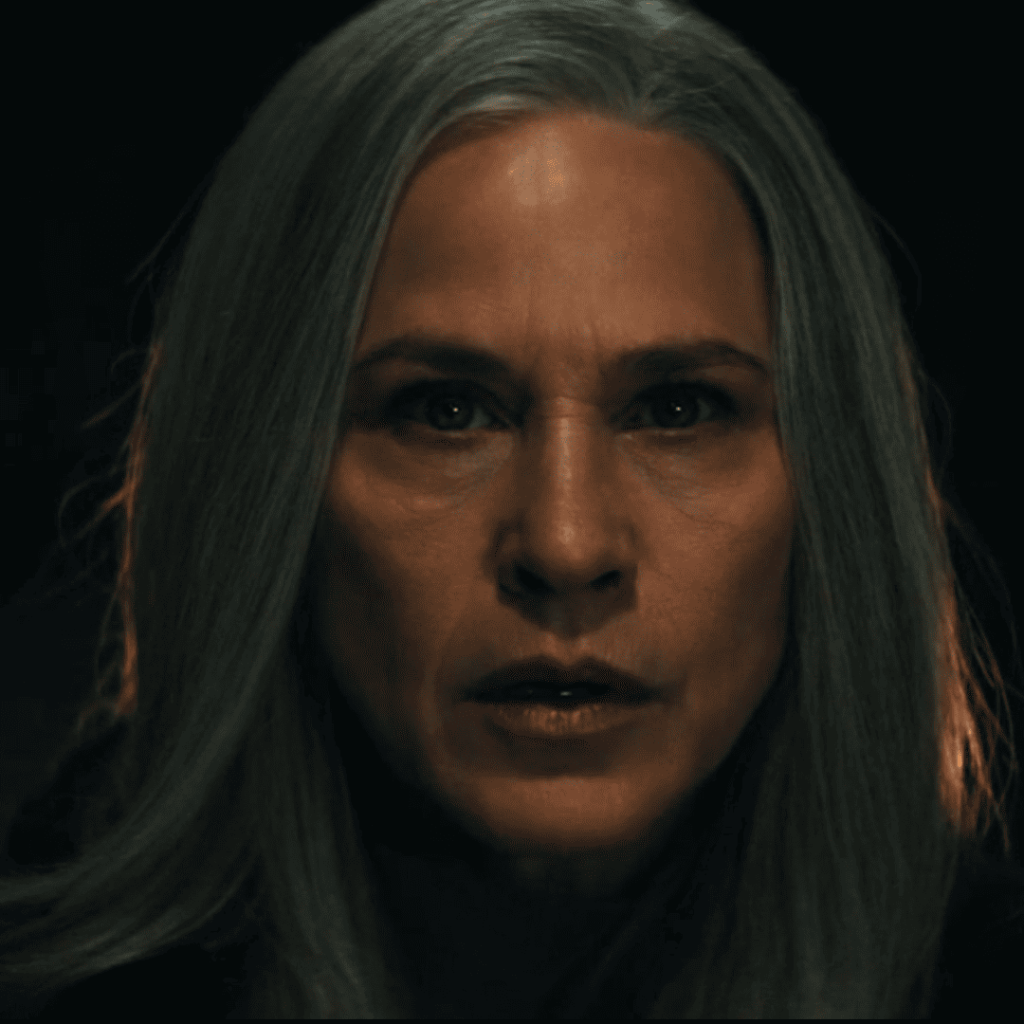
Severance Season 2 Identity – Cobel’s Legacy and Loss
We learn that Cobel was instrumental in creating the severance technology – a truth that destabilizes her identity entirely. After learning Mark is reintegrating, she returns to her childhood home, revealing Lumon’s history of exploiting children in factories. Her aunt is a bigot. Her past is poisoned.
Cobel invented a system that split people in half. And now, she’s fractured too. Her devotion to Lumon has cost her everything, and still she has nothing to show for it.
She explains to Mark that his work, refining numbers wasn’t abstract. Each file he completed created a new innie for his wife, Gemma. Cold Harbor, the final project, was the key to that reincarnation. It wasn’t just data. It was identity, commodified.
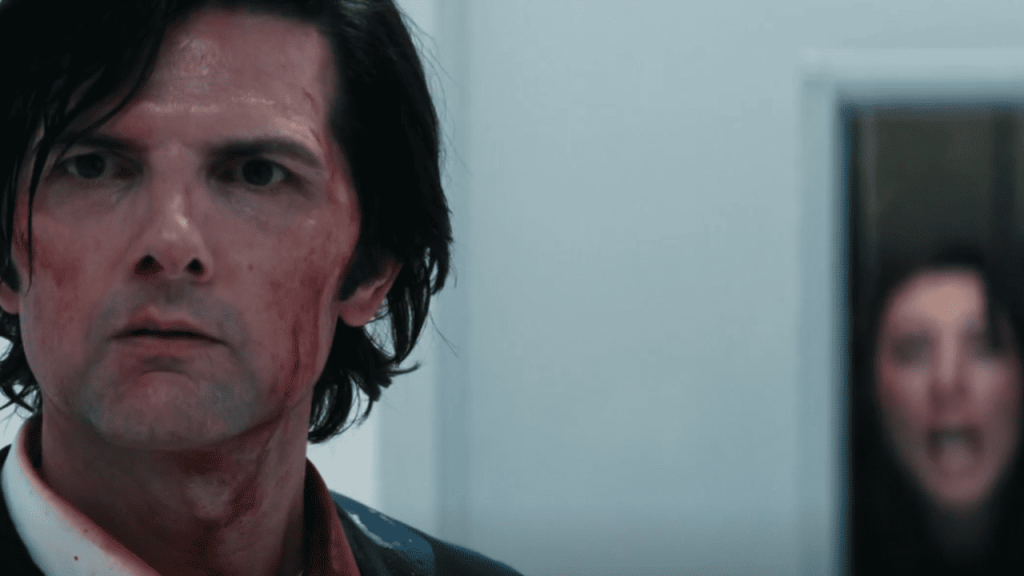
Final Thoughts: The Right to Exist
Severance Season 2 isn’t just asking who these characters are. It’s asking who gets to decide. Can your boss define your purpose? Can a company rewrite your memories? Can you be held accountable for choices you didn’t make?
For characters like Mark, Helly, Dylan, and even Milchick, identity isn’t something handed to them. It’s something they have to claim, over and over again.
If identity is a war, then this season proved that some battles are finally being won.
Got thoughts? Was Dylan right to stay? Is innie Mark more “real” than outie Mark? And what the hell is Cold Harbor really hiding? Drop your theories below.
“Into weird workplace horror? You might like my “Top 5 Sci-Fi Series.”
Disclaimer: This blog is for informational and entertainment purposes only. All copyrights and trademarks for the TV shows, films, and other media referenced are the property of their respective owners. This blog aims to provide original commentary and insights and claims no ownership over third-party content.

